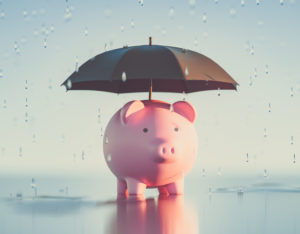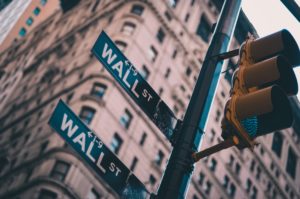A house destroyed by the passage of a hurricane in Florida is shown. (CHUYN/iStockphoto)
A stack of lumber is shown. (Marissa Daeger/unsplash.com)
A street sign on New York’s Wall Street is shown. (lo lo/unsplash)

The costs of commercial insurance continued to rise during the second quarter of 2021, though the rate of increase has slowed somewhat from the previous quarter, according to a survey by Willis Towers Watson, a multinational risk management, insurance brokerage and advisory company.
Wills Towers Watson’s Commercial Lines Insurance Pricing Survey (CLIPS) compared prices charged during the second quarter of 2021 with those charged during the same quarter in 2020, and found that prices had risen by just above 6% on average.
The survey indicated that nearly all insurance lines were more expensive. The largest increases were for excess/umbrella lines, while commercial auto, property, and directors’ and officers’ liability increases were also near or above double digits.
In contrast, workers compensation showed a slight reduction in price.
CLIPS is a retrospective look at historical changes in commercial property & casualty insurance (P&C) prices and claim cost inflation. For this most recent survey, 41 participating insurers representing some 20% of the U.S. commercial insurance market (excluding state workers compensation funds) provided data.
Commercial insurance is one more area where costs are rising for repair shops. Paint manufacturers, for example, have announced sizable price increases over the past several months due to “unprecedented” rising costs for raw materials, while inflation has lifted consumer prices by 5.3 percent in the past 12 months.
For some perspective on the insurance price increases, Repairer Driven News spoke with Alex Whittit, Client Relationship Manager with Intrepid Direct Insurance, which specializes in auto repair garage insurance.
Whittit explained that costs are being driven by a number of factors, all of which, unfortunately, lie beyond the control of shop owners who are facing higher bills. Those drivers, he said, include larger awards by juries; a rising frequency of catastrophic storm losses; inflation; and historically low interest rates.
“Unfortunately, there isn’t a lot collision shop owners can do,” Whittit said. “They can look at larger deductibles (which they may have forced on them anyway) on various lines. Loss experience is the biggest driver of cost. Most these owners don’t have a lot of claims, but obviously, the fewer claims you have, the lower your premium should be.”
 In recent years, attention has been focused on so-called “nuclear verdicts,” jury awards of $10 million or more to wronged parties. In a July 29, 2021 article in Claims Journal, writer James Butler cites data from VerdictSearch that indicates the number of such verdicts has quadrupled since 2019.
In recent years, attention has been focused on so-called “nuclear verdicts,” jury awards of $10 million or more to wronged parties. In a July 29, 2021 article in Claims Journal, writer James Butler cites data from VerdictSearch that indicates the number of such verdicts has quadrupled since 2019.
Repairers are well familiar with the 2017 John Eagle Collision case, in which a Texas jury found that the shop’s incorrect repair was liable for much of the severity of the crash of a 2010 Honda Fit, and awarded the couple injured and trapped inside the burning vehicle $42 million in damages.
The Dallas-based shop was found responsible for 75 percent of the couple’s ordeal and the $42 million verdict the jury handed down Monday, for a total of $31.5 million in damages. The Dallas County jury attributed the other 25 percent of the blame to the other driver.
The case, which involved using adhesive to secure the roof of a Honda Fit when Honda specified welding, underscored the need for repairers to follow OEM repair procedures to protect their customers safety, despite insurers’ pushback.
An article by law firm White and Williams LLP on JD Supra, a publishing platform for the legal profession, notes that some recent 10-figure verdicts include “an $8 billion verdict against Johnson & Johnson for Risperdal, a schizophrenia drug; a $2 billion verdict against Monsanto for its herbicide Roundup which the court subsequently reduced; a $1 billion verdict related to workplace negligence against HACC Pointe South, Inc.; and another verdict against Johnson & Johnson for $4.7 billion (recently reduced to about $2 billion by the appellate court) related to its talcum powder products.”
Jurors typically see such major awards as a way to punish defendants for behavior that threatens the public safety in some egregious way. However, the number and size of such awards can result in higher rates for others in the coverage pool.
The total U.S. insured losses from Hurricane Ida fall somewhere between $31 billion and $44 billion, according to an estimate from Risk Management Solutions Inc. That includes $6 billion to $9 billion in insured losses in the Atlantic states, and $25 billion to $35 billion for the Gulf of Mexico region.
Ida was just one of several extreme weather events that have filled the headlines. In a Sept. 7 report, NPR noted that weather disasters have become five times more common over the past 50 years, driven by climate change.
“The United States has incurred the biggest economic losses from weather-related disasters,” the network reported. “The five costliest disasters are all hurricanes that made landfall in the U.S. in the last two decades, led by Hurricane Katrina in 2005, which inflicted an estimated $164 billion in damages and killed more than 1,800 people. The second, third and fourth costliest storms all occurred in 2017: Hurricanes Harvey, Maria and Irma.”
This past spring, the Federal Emergency Management Agency rolled out its first major update in 50 years to the way it sets insurance costs for property in flood-prone areas. According to Reuters, “The agency said that, over the coming year, it will phase in a price-setting method that marks an epochal shift in the National Flood Insurance Program, which was set up in 1968 to cover property in flood-prone areas.
“New premiums will be based on a property’s value, risk of flooding and other factors, rather than simply on a property’s elevation in a flood zone. They will take effect on Oct. 1, 2021, for new policies and April 1, 2022, for the rest, FEMA said.”
“If you are located in a hurricane zone,” Whittit said, “insurance is getting very expensive.”
 In August, inflation accelerated at its fastest pace in about 13 years in the U.S. as the post-pandemic economic recovery gained steam, the Labor Department said. Year over year, prices increased 5.3%.
In August, inflation accelerated at its fastest pace in about 13 years in the U.S. as the post-pandemic economic recovery gained steam, the Labor Department said. Year over year, prices increased 5.3%.
Pent-up demand, and money accumulated by Americans during Covid, have contributed to spikes in prices for a number of consumer goods. One of the most notable trends has been the spike in the retail price of lumber and other building materials, which soared by 323% in the spring before settling down somewhat.
Rising retail prices means that many insured items will be more expensive to replace if they’re damaged or destroyed. For small businesses, that means that it may be time to reassess their property insurance coverage.
“Replacement value is the cost to rebuild parts, or your entire building. It’s influenced by the construction industry’s supply of contractors and price of materials at the time of rebuild,” Whittit said in an Aug. 24, 2021 guest column in RDN. “Replacement value is not the same as market value. Market value is generally thought of as the price you could sell your property for. It’s based on the current value of other properties in your area that are similar in size and features and is influenced by the competitiveness of the buyers’ market.”
 In general, insurance companies make a profit by taking in more money in premiums than they pay out in claims. But they also invest the premiums they collect, using the returns to bolster the bottom line, and to make premium reductions possible.
In general, insurance companies make a profit by taking in more money in premiums than they pay out in claims. But they also invest the premiums they collect, using the returns to bolster the bottom line, and to make premium reductions possible.
Insurance companies tend to invest in bonds, which are generally much less risky than the stock market, with its potential for volatility. The returns from bonds are generally pretty steady, too, making an insurer’s financial picture easier to forecast.
Unfortunately for insurers, the bond market is seeing some historically low interest rates. As of Friday, the interest rate for a 10-year U.S. Treasury note is just 1.376% — up from 0.701% a year ago, but still relatively low.
“Insurance companies invest the premiums they collect in ‘safe’ investments like bonds to make money off them while holding the capital,” Whittit said. “In theory, an insurance company making 5% on every dollar they collect could pay out (plus expenses) $98 of $100 and still turn a profit, but if they’re only making 1% percent now….”
Economics 101 teaches that the bond rate is linked to the performance of the stock market, with investors shifting from stocks to bonds in downturns, and vice-versa in boom times. Economically, the good news is that the relatively weak bond market is another sign of a strong Dow.
Intrepid Direct Insurance is a direct-to-consumer insurance company, which means it does not pay commissions to agents, and can therefore offer lower premiums. Intrepid Direct rewards I-CAR Gold Class certified shops with a 20% discount.
Featured image: a piggy bank under an umbrella. (ezeryadigar/iStockphoto)
A judge’s gavel is shown. (Bill Oxford/unsplash.com)
A house destroyed by the passage of a hurricane in Florida is shown. (CHUYN/iStockphoto)
A stack of lumber is shown. (Marissa Daeger/unsplash.com)
A street sign on New York’s Wall Street is shown. (lo lo/unsplash)